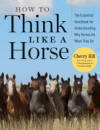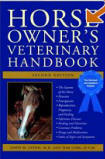Tons of facts about horses you
probably never knew. Hope you learn something.
- It takes about three days for a horse to digest an oat.
- There are a total of about 75 million horses in the world.
- "The one great precept and practice in using a horse is
this, never deal with him when you are in a fit of passion."
Xenophon, The Art Of Horsemanship, 400 BC
- The tallest documented mule is Apollo. He foaled in 1977,
measures 19.1 hh, and is the offspring of a Belgian mare crossed
with a mammoth jack.
- Show jumping was first televised in Great Britain in1948
during the Olympic Games at Wembley, London.
- The smallest recorded horse was a stallion called Little
Pumpkin; foaled on April 15, 1973; he stood 14 inches high and
weighed just 20 pounds in 1975.
- The oldest horse recorded was Old Billy. Foaled in 1760,
he died on November 27, 1822, having reached an incredible 62
years of age.
- The oldest Thoroughbred racehorse was Tango Duke. Foaled
in 1935, he died on January 25, 1978 at the age of 42.
- The tallest documented horse was a Shire gelding called
Sampson; foaled in 1846, he measured 21.2 hh in 1850 and weighed
3,360 pounds.
- The oldest horse to win a race was 18 year old Revenge,
who won at Shrewsbury, England, in 1790.
- The fastest horse recorded was Big Racket, who reached an
amazing 43.26 mph in a quarter mile race in Mexico City on February
5, 1945.
- Charles Pahud de Mortanges (Netherlands) holds the record
for winning four Olympic gold medals for three-day eventing
in 1924, 1928, and 1932.
- The Thoroughbred Janus, who was imported to the USA in 1756,
is considered to be one of the foundation sires of the Quarter
Horse.
- 'Duplice corde, two hearts that beat as one and a
single brain: the perfect combination of horse and rider.'
Alessandro Alvisi
- Horses will generally begin to grow their winter coats in
September, when the hair thickens and becomes coarser and dull.
This gives rise to the saying, 'no horse looks well at blackberry
time'.
- A 'war horse' is the term given to someone who has lived
through many hardships and can always be relied upon.
- The most common type of Roman chariot to be used in races
was drawn by four horses, and was called the quadriga.
- The earliest methods of harnessing animals always involved
two animals, one on either side of a central shaft. The idea
of harnessing one animal between two shafts did not appear to
develop until the second century in China.
- The Great Khan, grandson of Genghis Khan, kept a herd of
approximately 10,000 pure white mares, along with pure
white stallions, and these horses were treated as sacred.
- Koumiss is the name given to a drink made from fermented
mare's milk that is a specialty among the nomadic Kazaks of
Kazakhstan, Eurasia. The Kazaks believe that this drink can
cure many diseases.
- Old horses will often grow white hairs around the face and
their muzzle.
- Vaqueros is the name given to the Spanish cowboy;
they were among the first cowboys in America.
- The first trams were horse-drawn, usually by one to four
horses. They traveled at a speed of around 6-7 mph, and were
still being used well into the last half of the 19th century.
- In the Persian epic Shah Namah, Book of Kings, the
chief hero, Rustam, rode a horse called Rakush, who was reputed
to be the best warhorse in the world.
- When a horse or pony loses a shoe, it is sometimes said
to have 'thrown a shoe'.
- Mr. Ed, the talking equine star of the 1960s television
series, was a golden palomino. He learned an enormous amount
of tricks for his role, including answering a telephone, opening
doors, writing notes with a pencil, and unplugging a light.
Apparently, Mr. Ed would occasionally have a fit of temper,
as befitting his star status, and would stand stock still, wheezing
and refusing to move.
- When clipping a horse's coat, the first clip is usually
done in October and the last clip should not be done any later
than the last week of January. Clipping after this time will
affect the spring coat growing through.
- The first American-bred and owned racehorse to win the Grand
National was Battleship, son of Man O' War, who won the legendary
race in 1938 while being ridden by a seventeen year old jockey.
- The Celts regarded the horse as a sacred animal in their
beliefs.
- Horses' hooves grow approximately 0.25 in a month, and take
nearly a year to grow from the coronet band to the ground.
- In the state of Arizona, it is illegal for cowboys to walk
through a hotel lobby wearing their spurs.
- The WAHO is the World Arabian Horse Association, which approves
the Arabian studbooks worldwide.
- Feeding garlic to horses is believed to help combat some
worms, repel flies, aid respiratory disorders, and have a cleansing
effect of blood. There is, however, no scientific evidence to
prove this, and it does cause halitosis (chronic bad breath).
- The amazing tomb of Qin Shi Huang, 259 BC to 210 BC, the
first emperor of the Qin Dynasty contains over 500 terracotta
models of chariots horses, and 116 terracotta cavalry horses.
The terracotta models show great detail, with the manes clipped
and braided, and the horses standing around 17 hh.
- Han Kan was a famous artist of the T'ang Dynasty, 618-906
AD and was the court and horse painter to the Emperor Hsuan-Tsung,
who is believed to have owned approximately 40,000 horses.
- Horses with lop ears are often said to have a kind temperament,
but beware of the exception to the rule.
- At one time it was a Japanese custom to hang the head of
a horse at the entrance to a farmhouse to act as a good luck
talisman.
- Cross-country jumps are marked with a red flag on the right
side and a white flag on the left side; the horse has to jump
through these two flags or it is considered out of bounds and
you are disqualified.
- During Oliver Cromwell's reign in England (1649-59) horse
racing was illegal.
- When riding on roads it is a good idea to wear some form
of reflective clothing.
- A landau was the preferred fine-weather carriage for fashionable
ladies and gentlemen of the 19th century.
- The western cowboy is responsible for taking care of the
vast herds of cattle and horses belonging to the rancher for
whom he works.
- You can lead a horse to water, but you can't make it drink!
- A healthy adult horse should have a pulse of between 36
and 40 beats per minute while at rest.
- 'Don't lock the stable door after the horse has bolted'
is an old saying meaning that once the damage has been done
it is too late to take precautions against it.
- Japan has restaurants that specialize in horse meat. When
this delicacy is served raw, it is called 'cherry blossom'.
- The highest prize money in horse racing in the world is
the $2.4 million first prize for the Dubai World Cup.
- Arabians have one less rib, one less lumbar bone, and one
or two fewer tail vertebrae than other horses.
* Information summarized from The Encyclopedia of Horses and
Ponies, by Tamsin Pickeral
Horses are the hoofed, herbivorous
species that include the zebra, donkey, and mule. There are several
groups of species of horses. One contains the zebra, which is native
to Africa and another has the donkey, including the kiang and onager
of Asia and the wild ass of Africa. The third group contains Przewalski's
wild horse, which is now only able to be found only in captivity.
The only extant true wild horse, it produces fertile offspring when
crossed with the domestic horse. Other "wild" horses can be found,
including the mustang. These horses have been seen living in the
wild.
Modern Horses
One of the most noted characteristics
of the horse is that it has only one toe, called the hoof. The hoof
has a hard covering, made of keratin. There are several parts of
the hoof. A horse's skull is very long, and horses have 44 teeth.
A horse uses it's incisors, which form a semicircle, to crop grass
and other plants. A horse's skull is composed of 34 bones. There
is a gap in-between the horse's premolars and other teeth, which
is where the bit is settled when the horse is being driven or ridden.
All the teeth have long crowns and pretty short roots. A large horse's
stomach can hold approximately 10 gallons at one time.
Male and female horses both are mature
enough to reproduce by the age of two. However, they are rarely
used for breeding until they are at least three years of age. The
gestation period is about 11 months, and single births are the rule.
Twins are a rarity, and only a few births of three or more foals
have ever been recorded.
|



